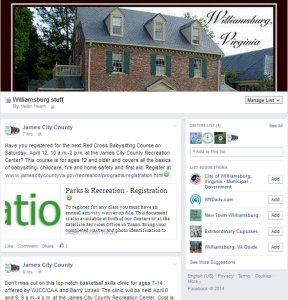
[Originally published September 10, 2014] Content strategy has been a darling term — even a buzzphrase — of several converging fields of late, and as someone with an editorial background whose role danced across those fields in recent years, I’ve been watching curiously to see whether anyone could actually land on a good explanation of content strategy. The main problem with settling on a definition has been that many of the folks weighing in on it have been from marketing or technical writing, and focusing heavily on the audit/architecture components or the outcome/analytics components without really examining *strategy.*
But to my mind, overall content strategy is kinda like dealing with books–and I’m drawing a bit from my background as a former managing online editor, a library volunteer who contemplated getting an MLS and a retail bookstore manager for a chain that got blindsided by this whole internet thing and no longer exists.
Inventory and architecture are important if your focus is on being the librarian. Outcome and analytics are the primary focus of the bookseller. Neither will have anything to work with without decent writers and editors doing the creation, curation, and QA.
And the content strategist? The publisher. This is a person who can take stock of overall trends and knowledge of the marketplace, identify gaps between existing stuff and needed stuff, retire hackneyed and predictable pieces to the “reject” pile, and manage the workflow, the output, the talent needed to produce, market and organize the information.
It’s an imperfect metaphor, really. So is just about everything else I’ve seen about content strategy, but when you’re trying to get your arms around the concept it’s helpful to understand that there is a difference between architecture, analytics, and production. And all of these things are involved in the implementation of content strategy but none of them IS content strategy.
It’s this simple, folks. I’ve said it for years about every social media platform. Start with your goals. What do you want to achieve with your stakeholders? Once you know that, it’s about understanding the needed messaging on all channels to accomplish it, what to leverage where, how to do so effectively, and how to measure the effort and adjust as need be. Print, email, web, social, mobile. And whatever the next thing is.






